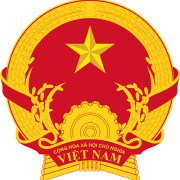
MoMo, the best known e-wallet in Vietnam, has announced investment from US-based Warburg Pincus. Declining to reveal the investment value, MoMo said this was the highest amount of capital injected by foreign investors into fintech and e-commerce sectors in Vietnam.
MoMo is a favorite address for foreign investors. Prior to that, Standard Chartered Private Equity and Goldman Sachs also poured money into it. The e-wallet said there are now 10 million MoMo users, with the volume of transactions increasing by three times in the last year.
MoMo is a favorite address for foreign investors. Prior to that, Standard Chartered Private Equity and Goldman Sachs also poured money into it. The e-wallet said there are now 10 million MoMo users, with the volume of transactions increasing by three times in the last year.
According to Pham Thanh Duc, CEO of MoMo, in order to double the number of users, MoMo in 2018-2019 will focus on developing mobile payment platform to allow payments for anything, anywhere and anytime, as well as develop online, office, and O2O partner network.
ZaloPay and AirPay, which both belong to powerful internet firms, VNG and SEA, have also spent big money to run advertising campaigns to lure more customers.
Grab, well known in Vietnam as an e-hailing app, has developed GrabPay via Moca e-wallet. Sources said the ambitious investor is making hectic preparations to jump into the finance and credit market.
Commercial banks have also joined the stiff competition in the payment market. Along with popular mobile banking apps, banks have launched apps and platforms specifically designed for payments.
Vietcombank, for example, has VCB Pay; VP Bank, YOLO; Sacombank, Sacombank Pay; TP Bank, QuickPay; and LienViet Post, Bank Vi Viet.
Expansion
According to the State Bank of Vietnam (SBV), 76 via-internet and 41 mobile payment service providers and 26 e-wallets have been licensed so far.
Analysts have noted that all payment intermediaries want to become ‘super apps’, ecosystems that allow transactions with many different purposes.
MoMo, for instance, has announced relations with 10,000 partners in many different fields, from consumer finance and insurance to e-commerce, with 100,000 POS at restaurants, cafes, supermarkets, jewelry shops and street food shops.
As for banks, Sacombank has said it now has 7,000 POS, where 2,500 agents accept payments with QR Code.
Technology firms such as Samsung, Google and Apple, and mobile network operators such as Viettel and VNPT (the Vietnam Post and Telecommunication Group), are rivals in the competition. The ‘big guys’ all own large ‘ecosystems’ which include customer data and associated services.
The race among app developers is in the number of connected services, analysts said.
.
ZaloPay and AirPay, which both belong to powerful internet firms, VNG and SEA, have also spent big money to run advertising campaigns to lure more customers.
Grab, well known in Vietnam as an e-hailing app, has developed GrabPay via Moca e-wallet. Sources said the ambitious investor is making hectic preparations to jump into the finance and credit market.
Commercial banks have also joined the stiff competition in the payment market. Along with popular mobile banking apps, banks have launched apps and platforms specifically designed for payments.
Vietcombank, for example, has VCB Pay; VP Bank, YOLO; Sacombank, Sacombank Pay; TP Bank, QuickPay; and LienViet Post, Bank Vi Viet.
Expansion
According to the State Bank of Vietnam (SBV), 76 via-internet and 41 mobile payment service providers and 26 e-wallets have been licensed so far.
Analysts have noted that all payment intermediaries want to become ‘super apps’, ecosystems that allow transactions with many different purposes.
MoMo, for instance, has announced relations with 10,000 partners in many different fields, from consumer finance and insurance to e-commerce, with 100,000 POS at restaurants, cafes, supermarkets, jewelry shops and street food shops.
As for banks, Sacombank has said it now has 7,000 POS, where 2,500 agents accept payments with QR Code.
Technology firms such as Samsung, Google and Apple, and mobile network operators such as Viettel and VNPT (the Vietnam Post and Telecommunication Group), are rivals in the competition. The ‘big guys’ all own large ‘ecosystems’ which include customer data and associated services.
The race among app developers is in the number of connected services, analysts said.
.
